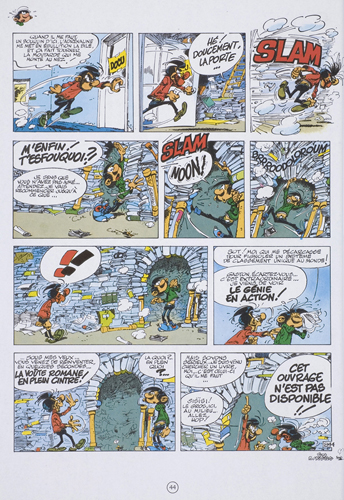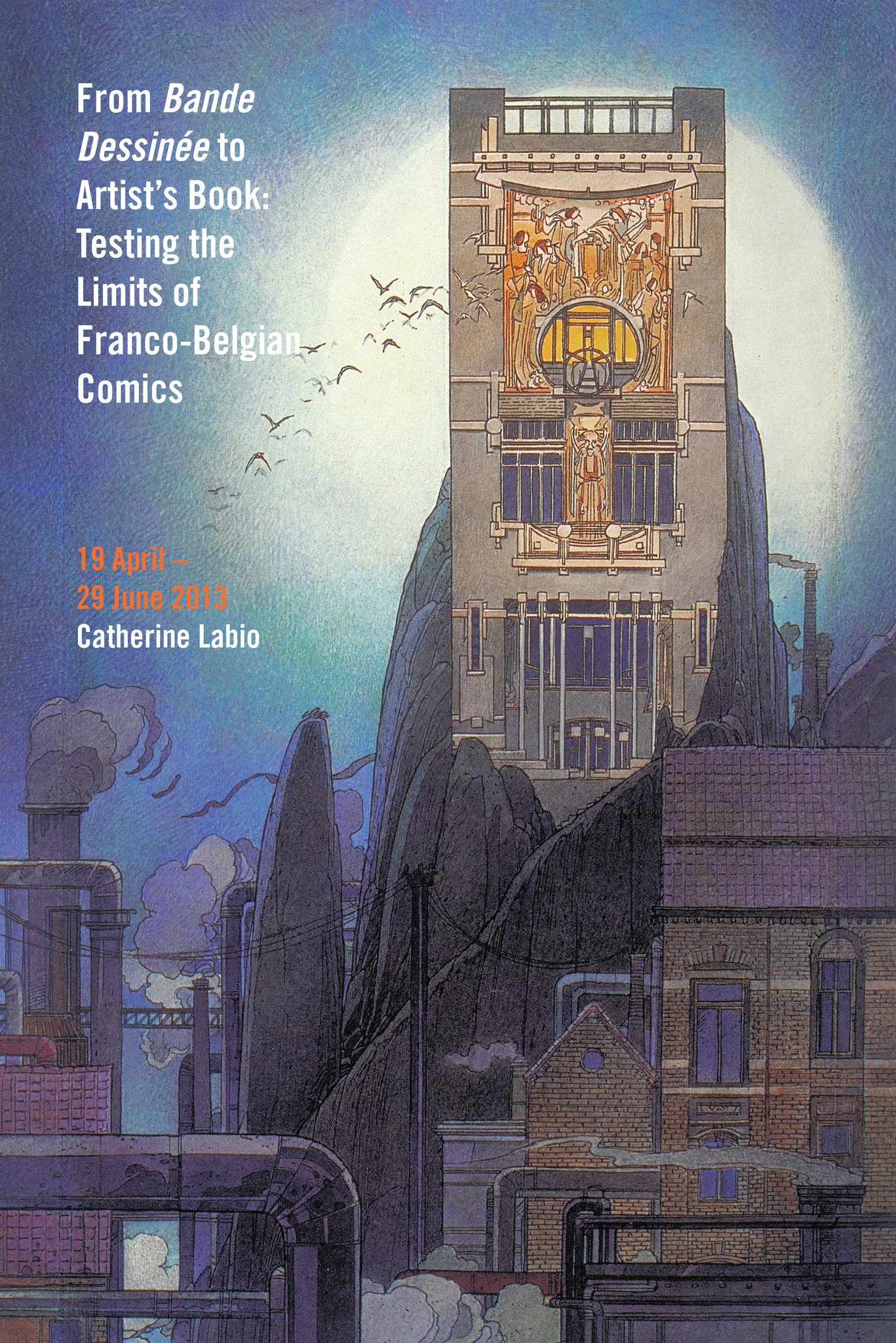From Bande Dessinée to Artist’s Book: Testing the Limits of Franco-Belgian Comics
Along with American comics and Japanese manga, bande dessinée(“drawn strip”) is one of the great comics traditions. In French, “bande dessinée,” often abbreviated as “BD,” refers to comics in general and to francophone European comics in particular. The English term “Franco-Belgian comics” corresponds to the latter, narrower definition. It is geographically too restrictive, especially today, but does reflect the central role works published in Belgium and France have played in shaping this important tradition.
One of the essential characteristics of Franco-Belgian comics has been the early adoption of the hardback, which has done much to elevate the status of the genre in francophone Europe. This exhibition presents key moments in the evolution of dessinée volumes, from their initial standardization into a dominant format: 48 pages measuring approximately 11.5 x 8 in, in color, and with a hard cover- to contemporary explorations into the possibilities offered by the book as three-dimensional object, explorations that have led, in Europe as elsewhere, to a blurring of the distinction between comic books and artist’s books.
Image: Franquin, Gaston 16, plate 844, © Dupuis 1979, 1997.

